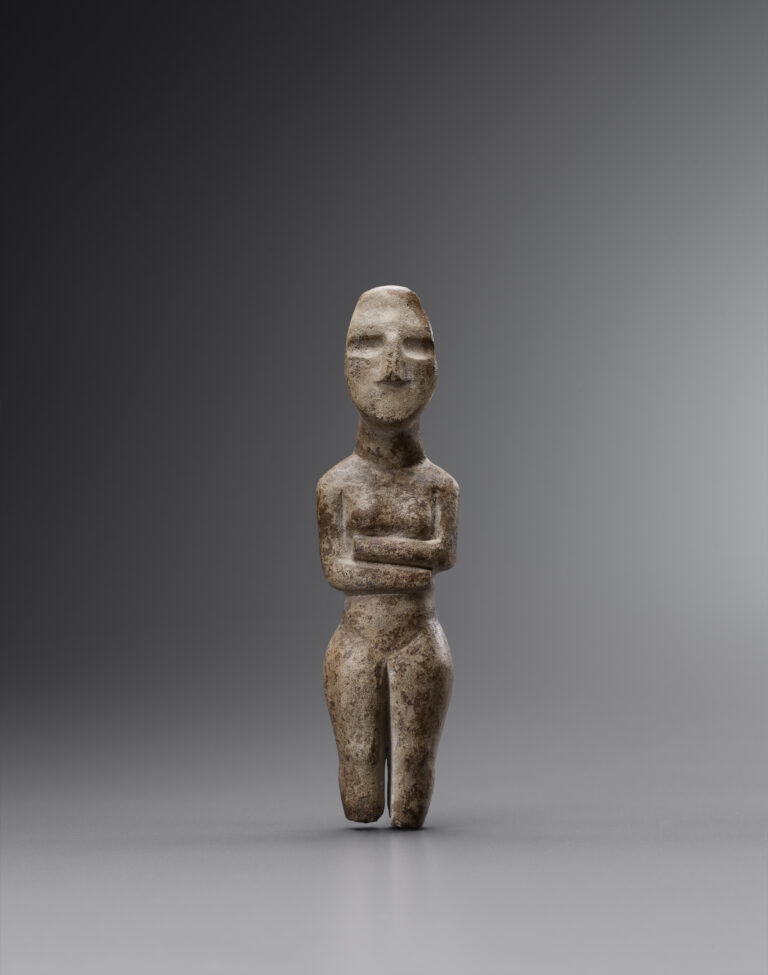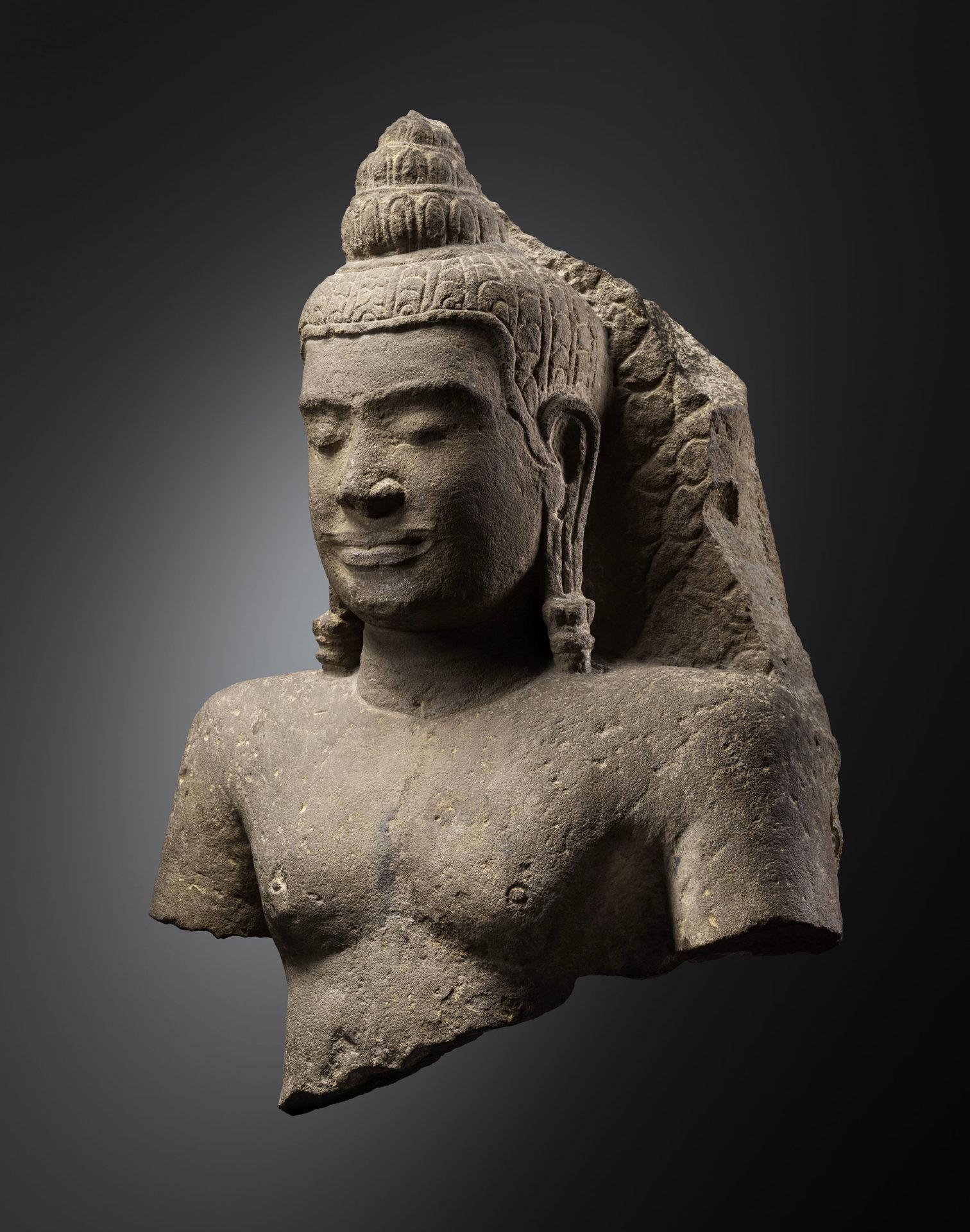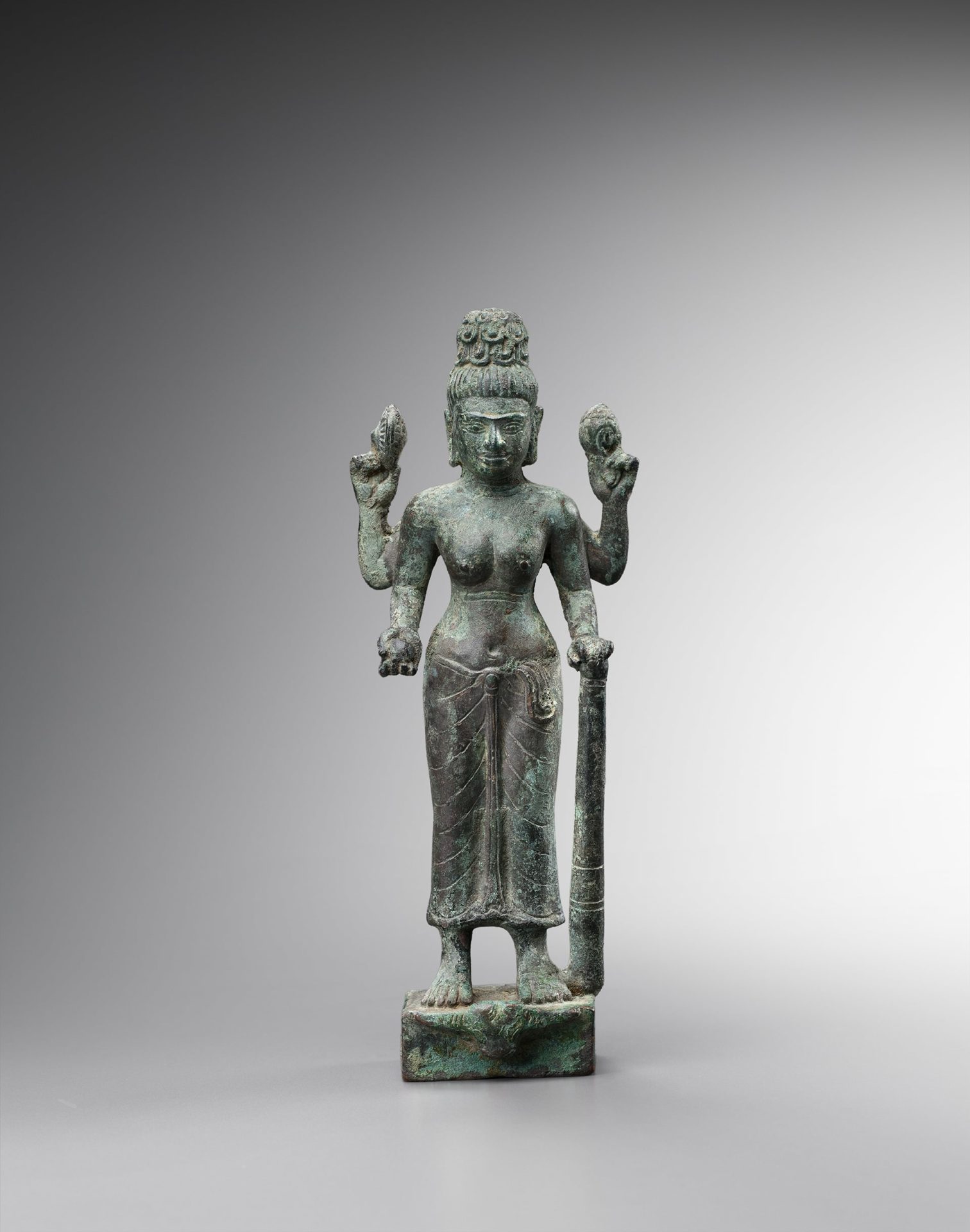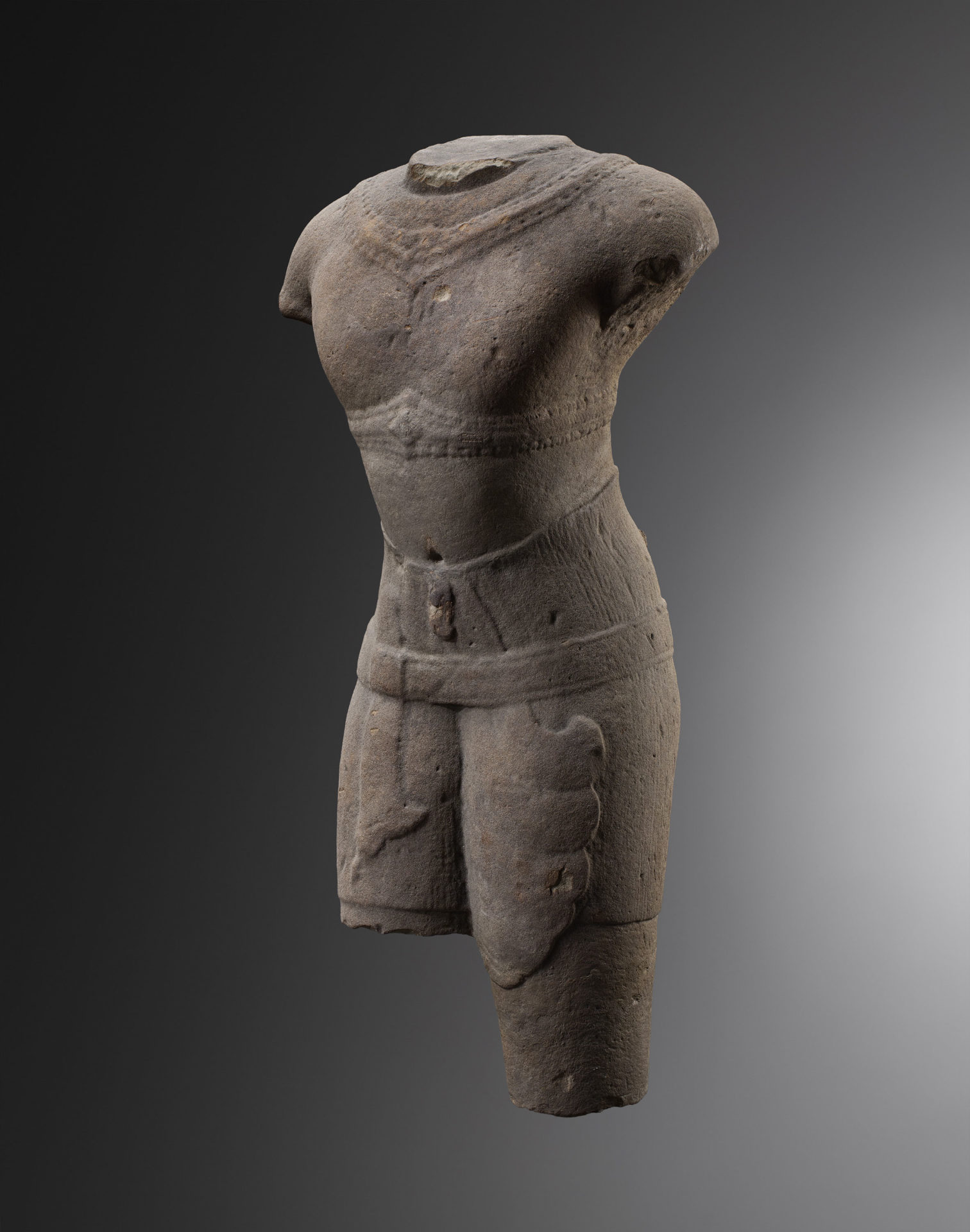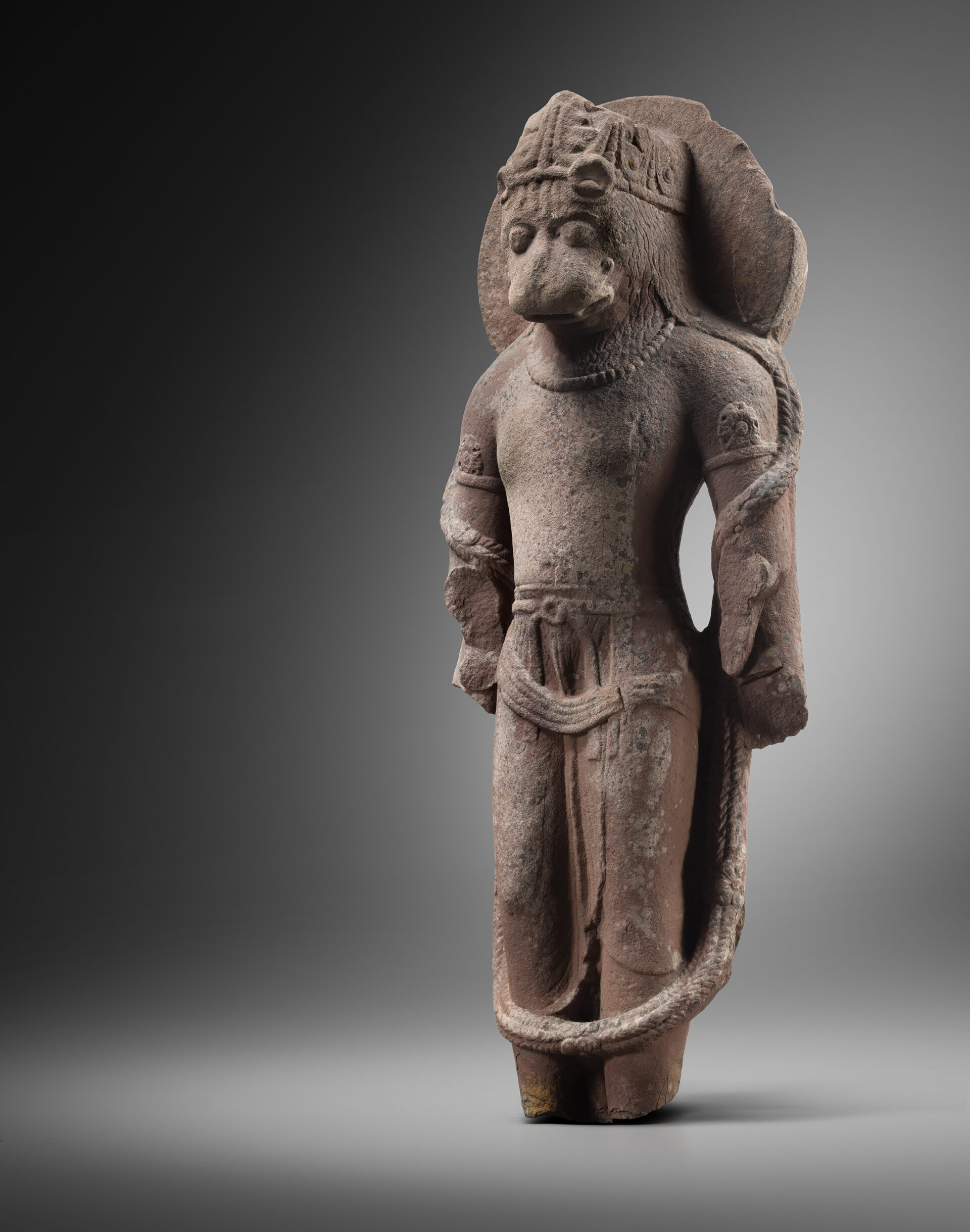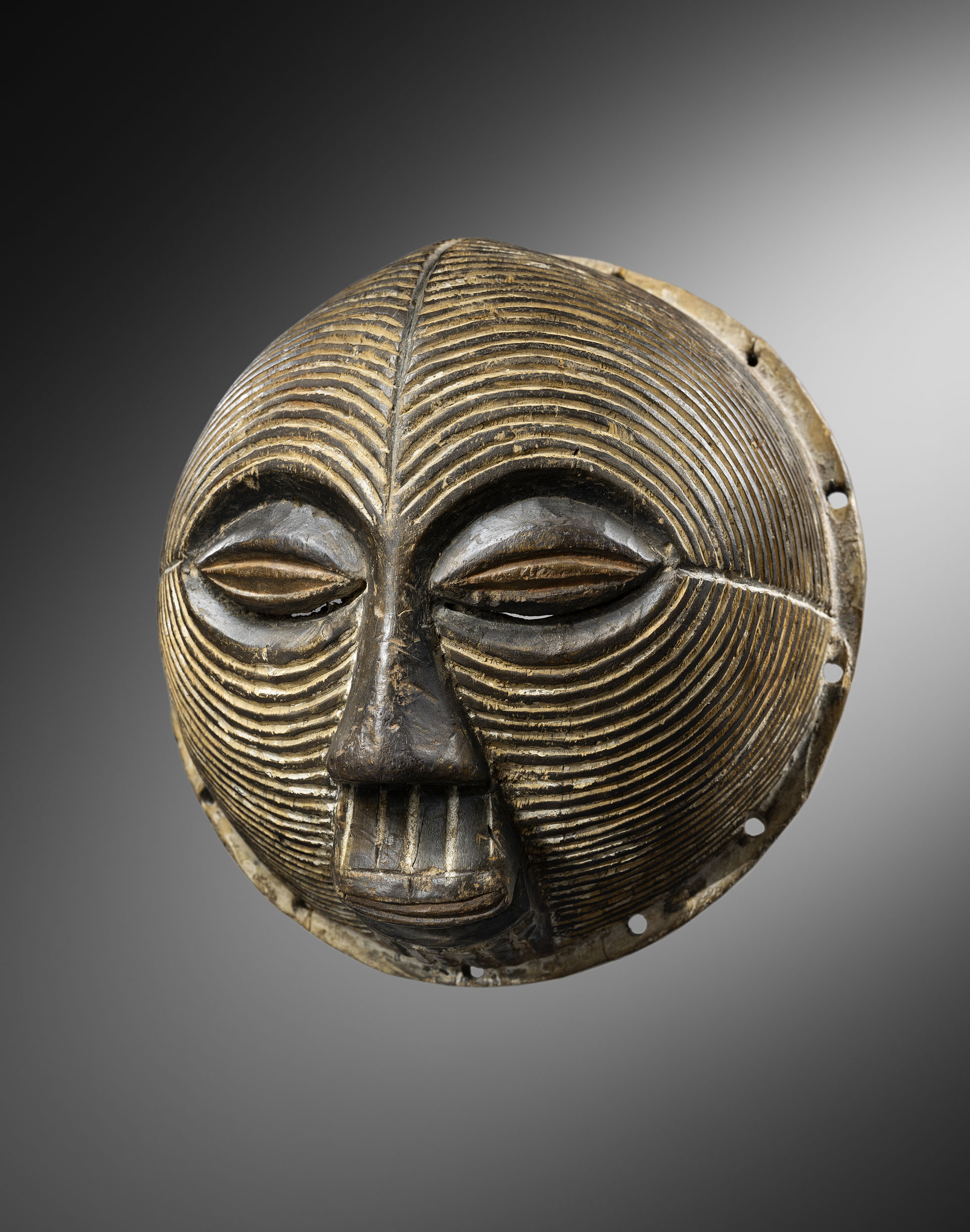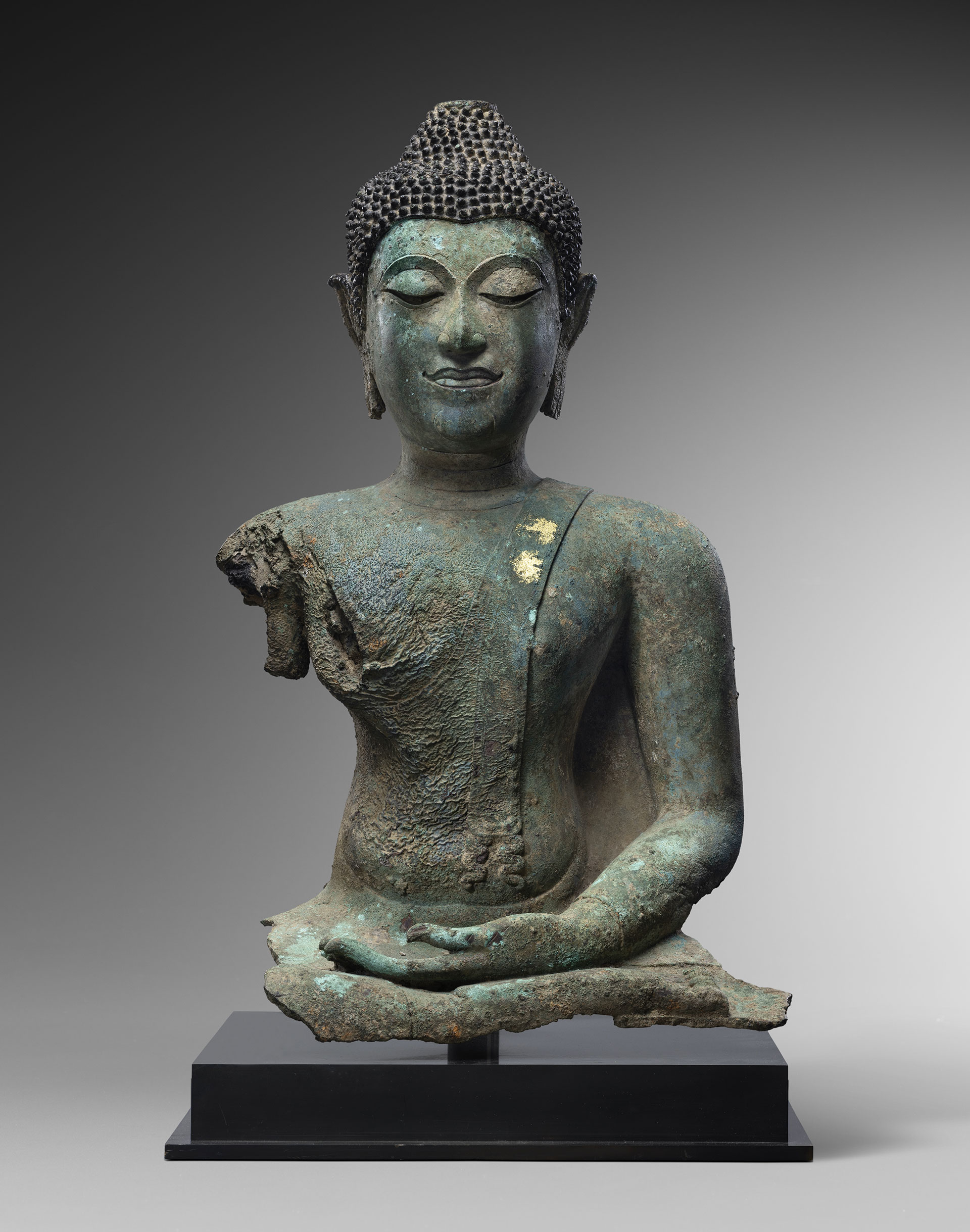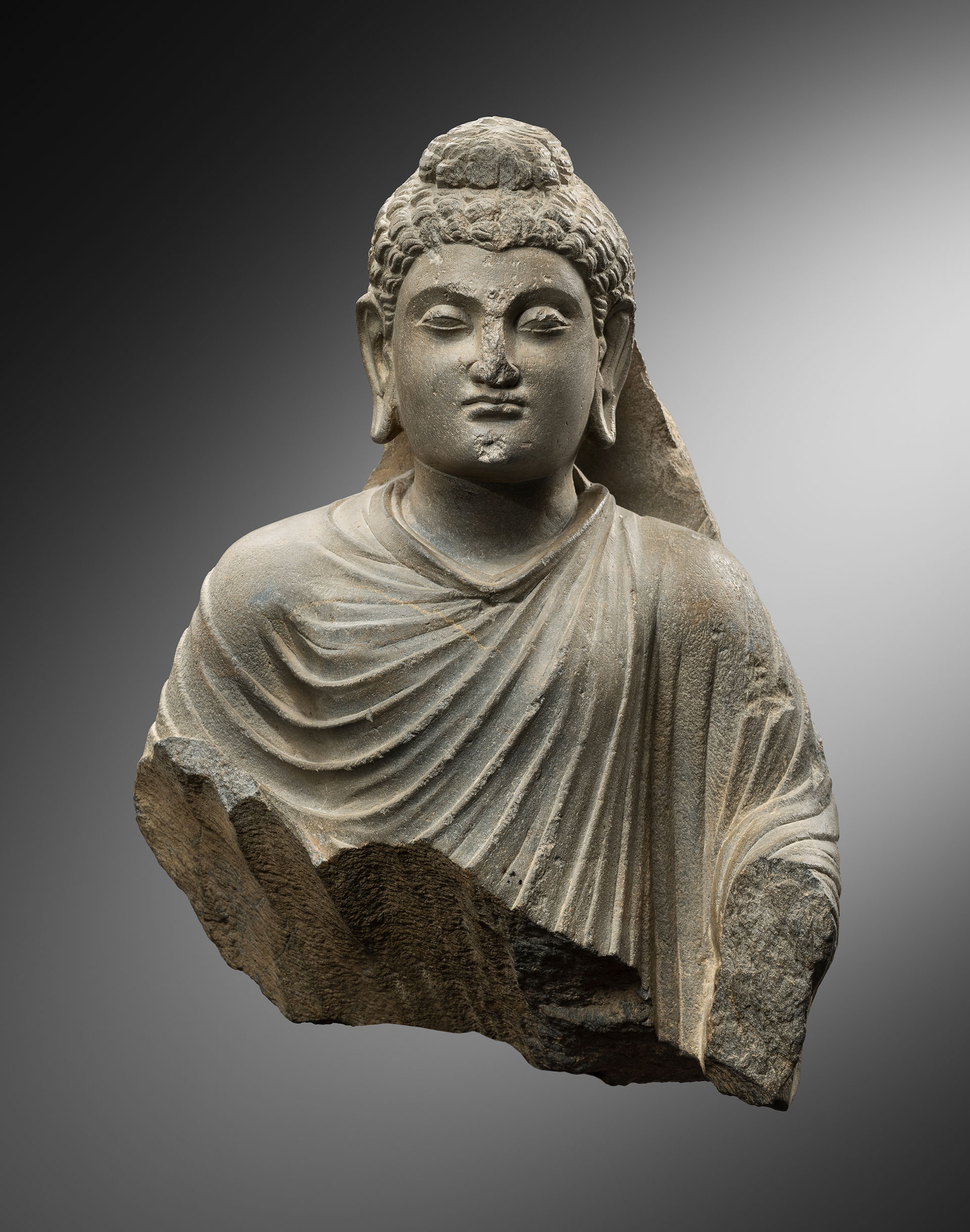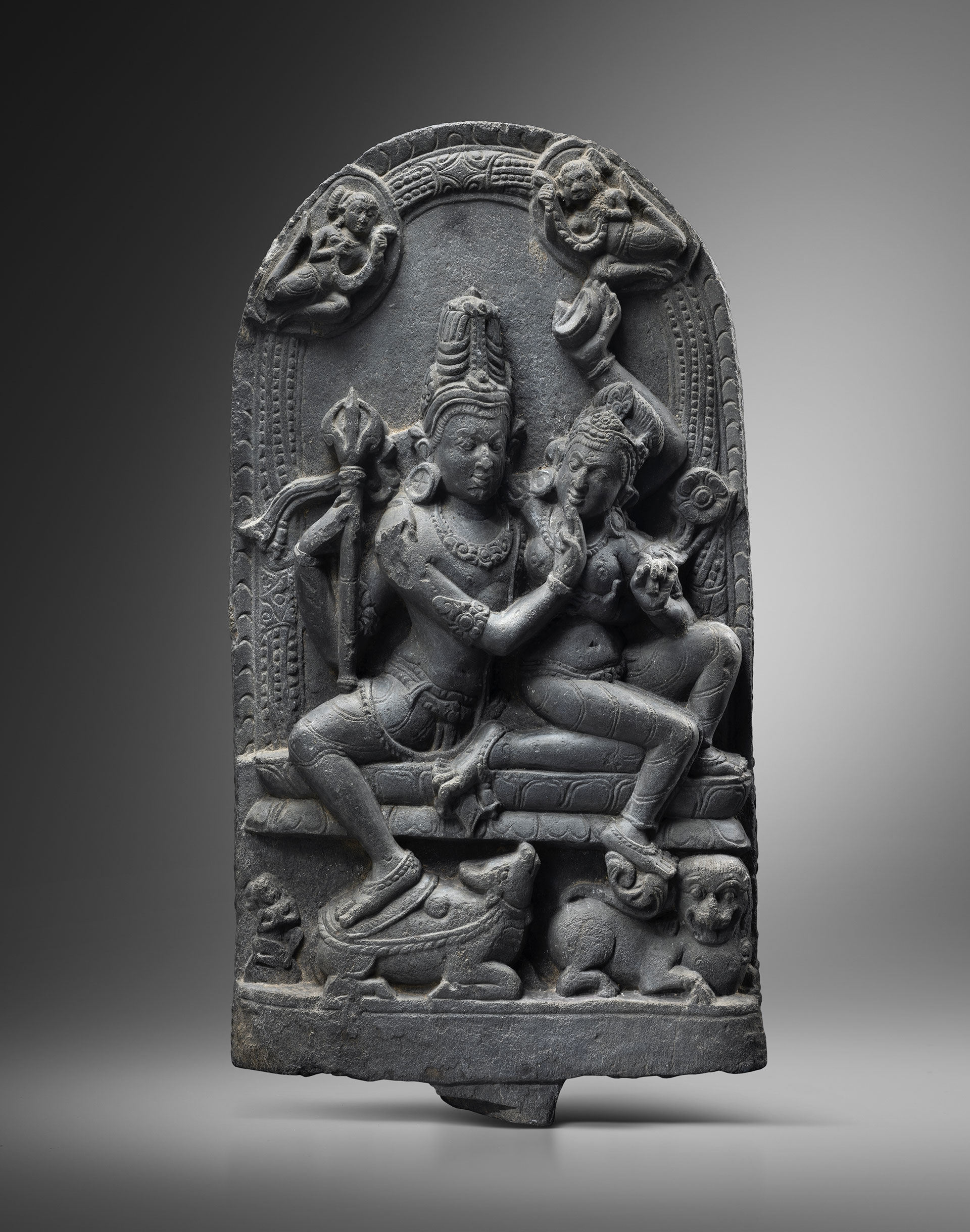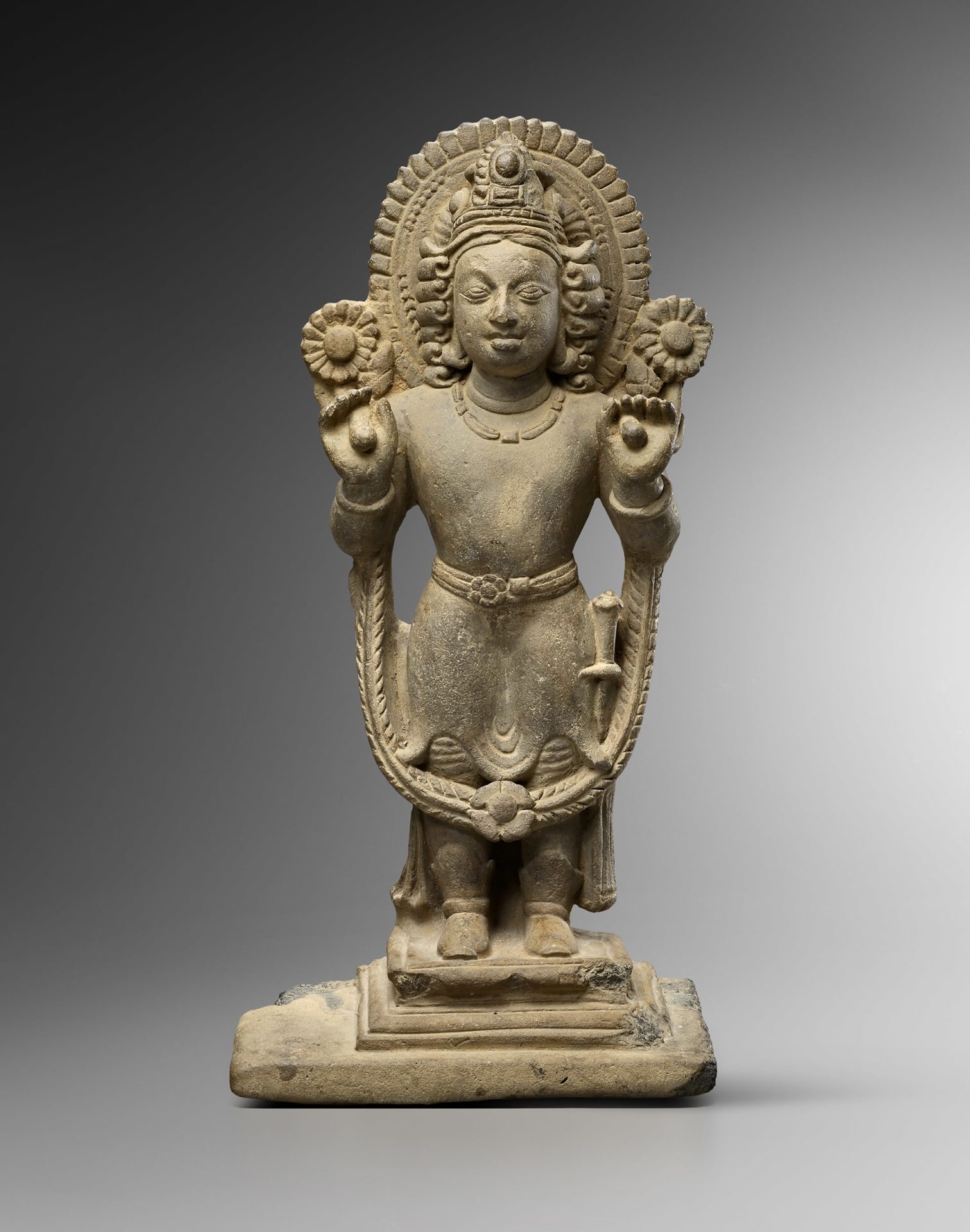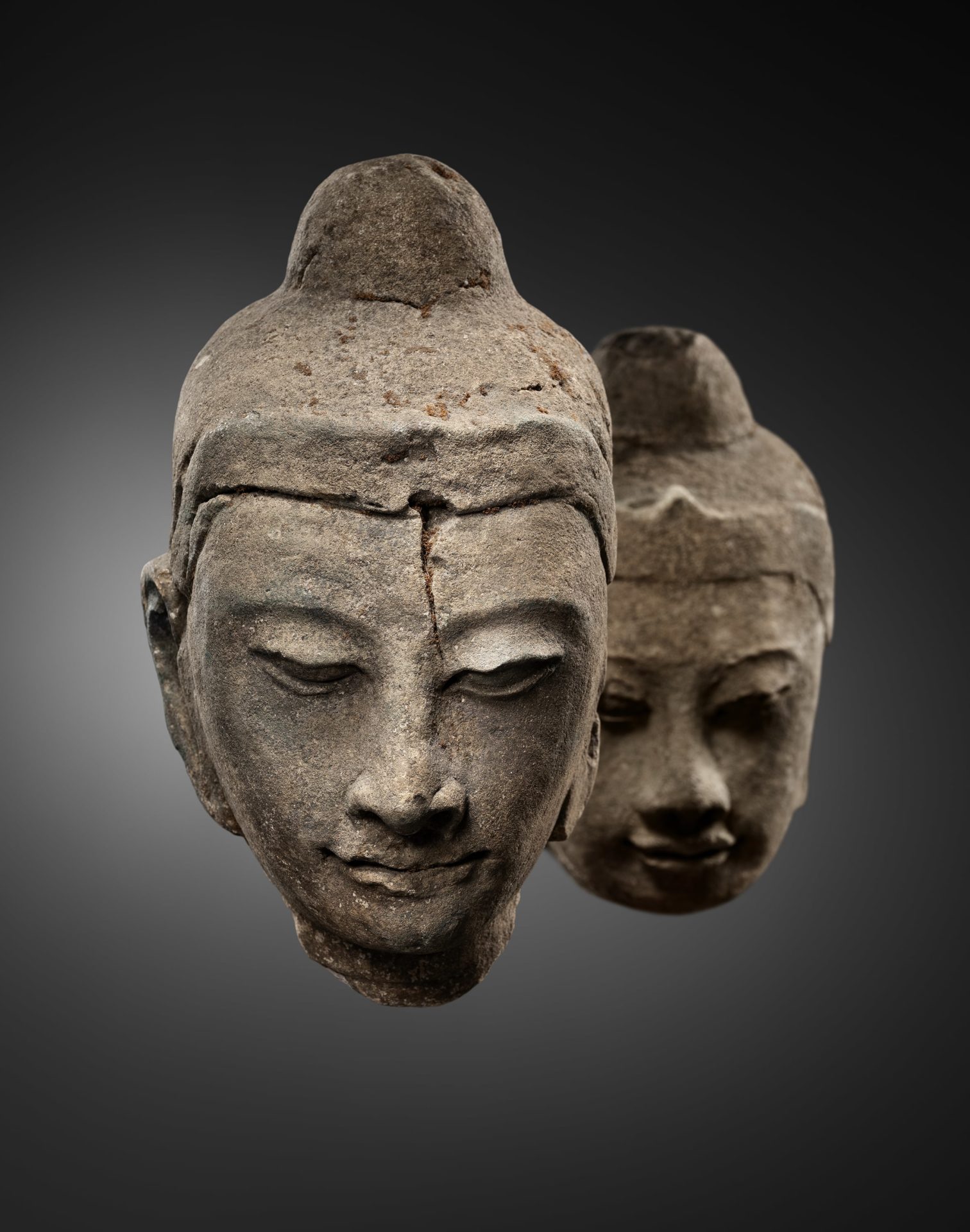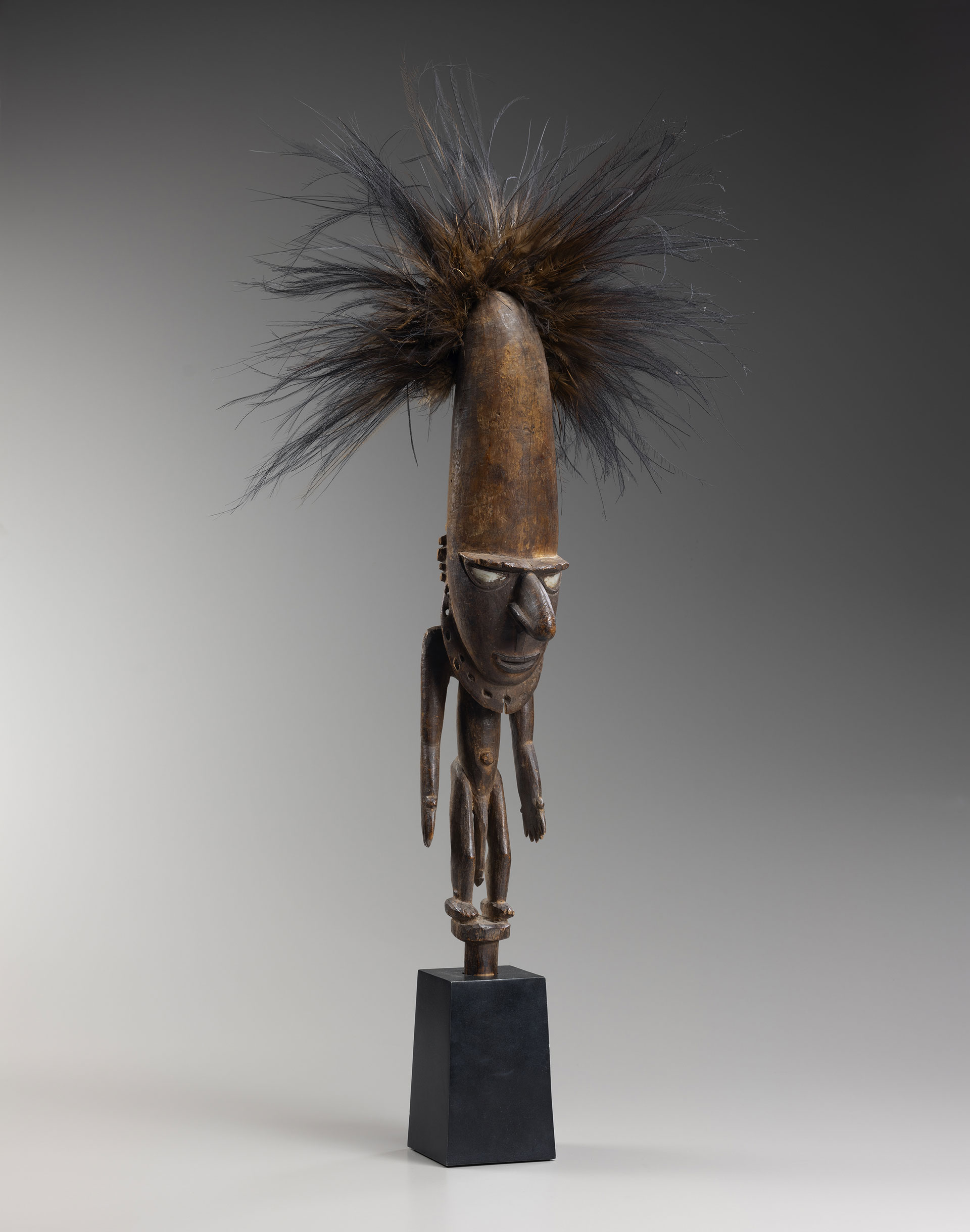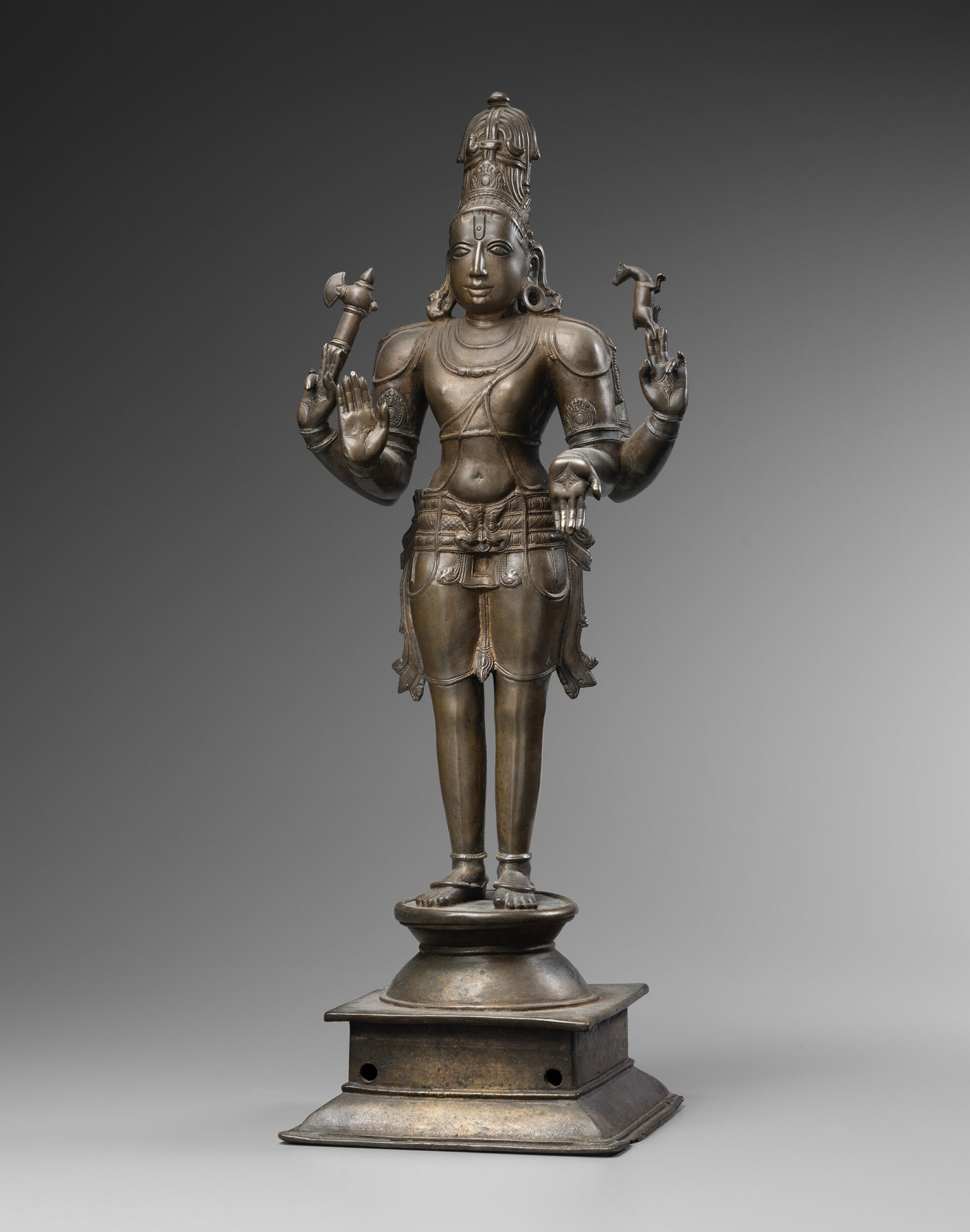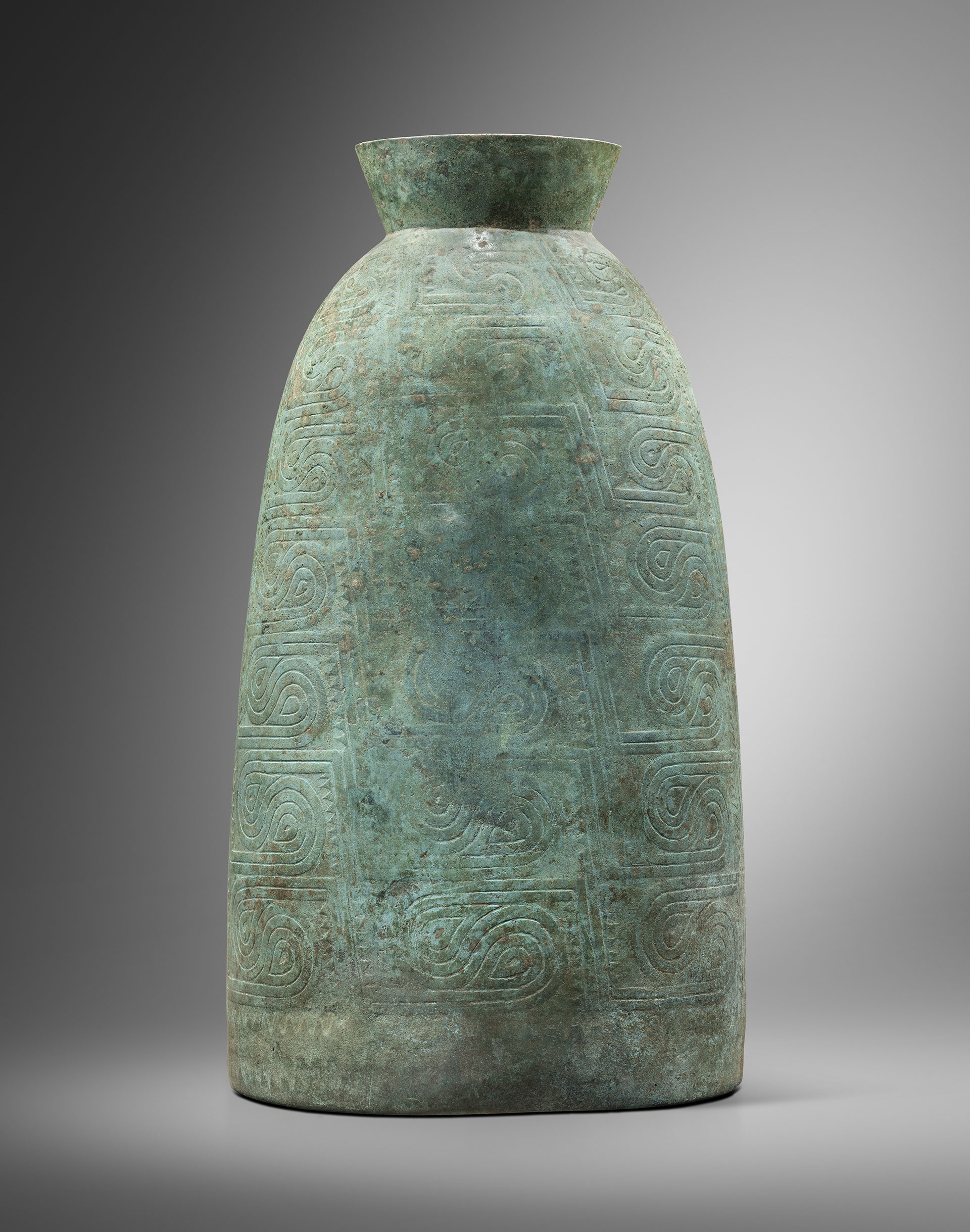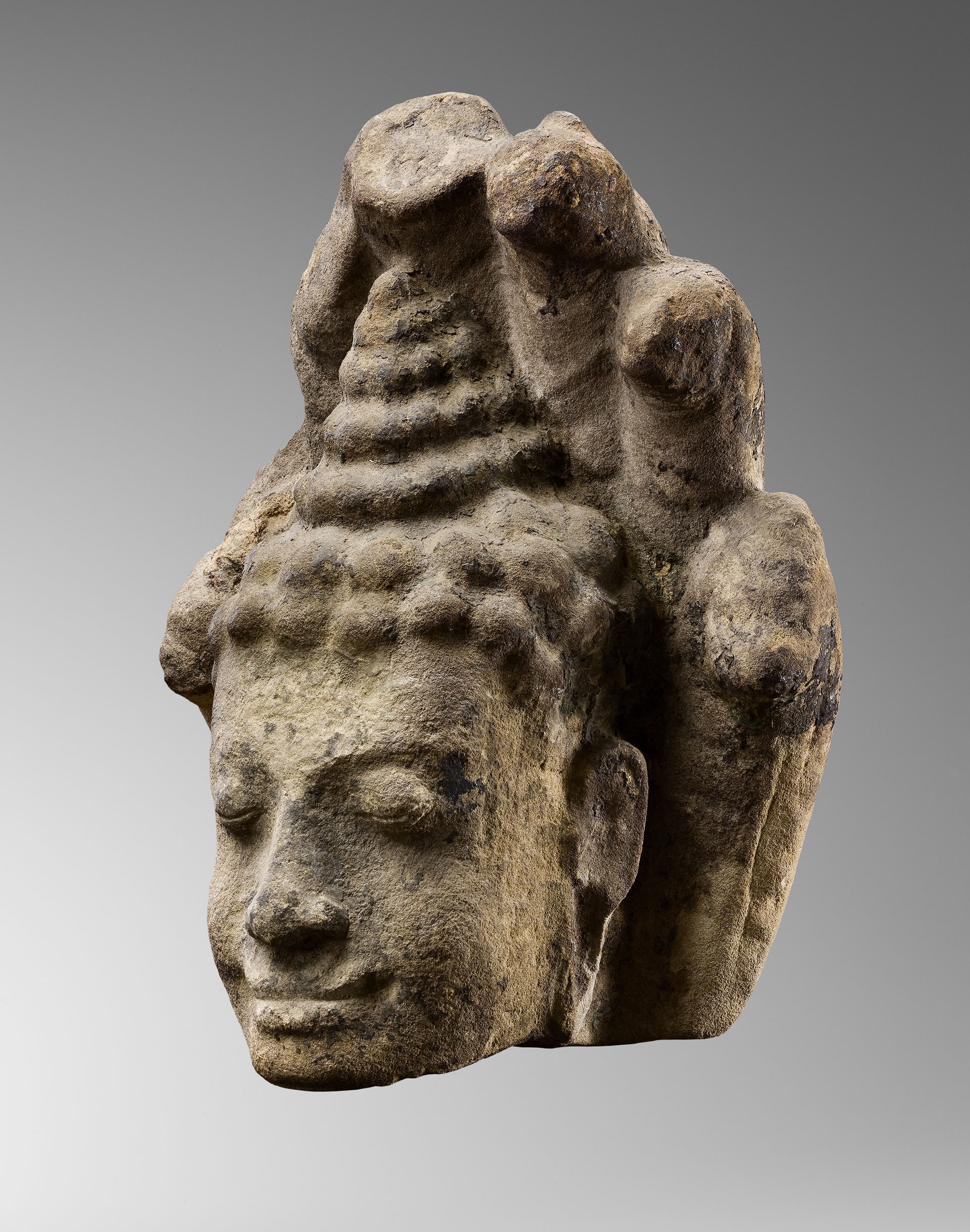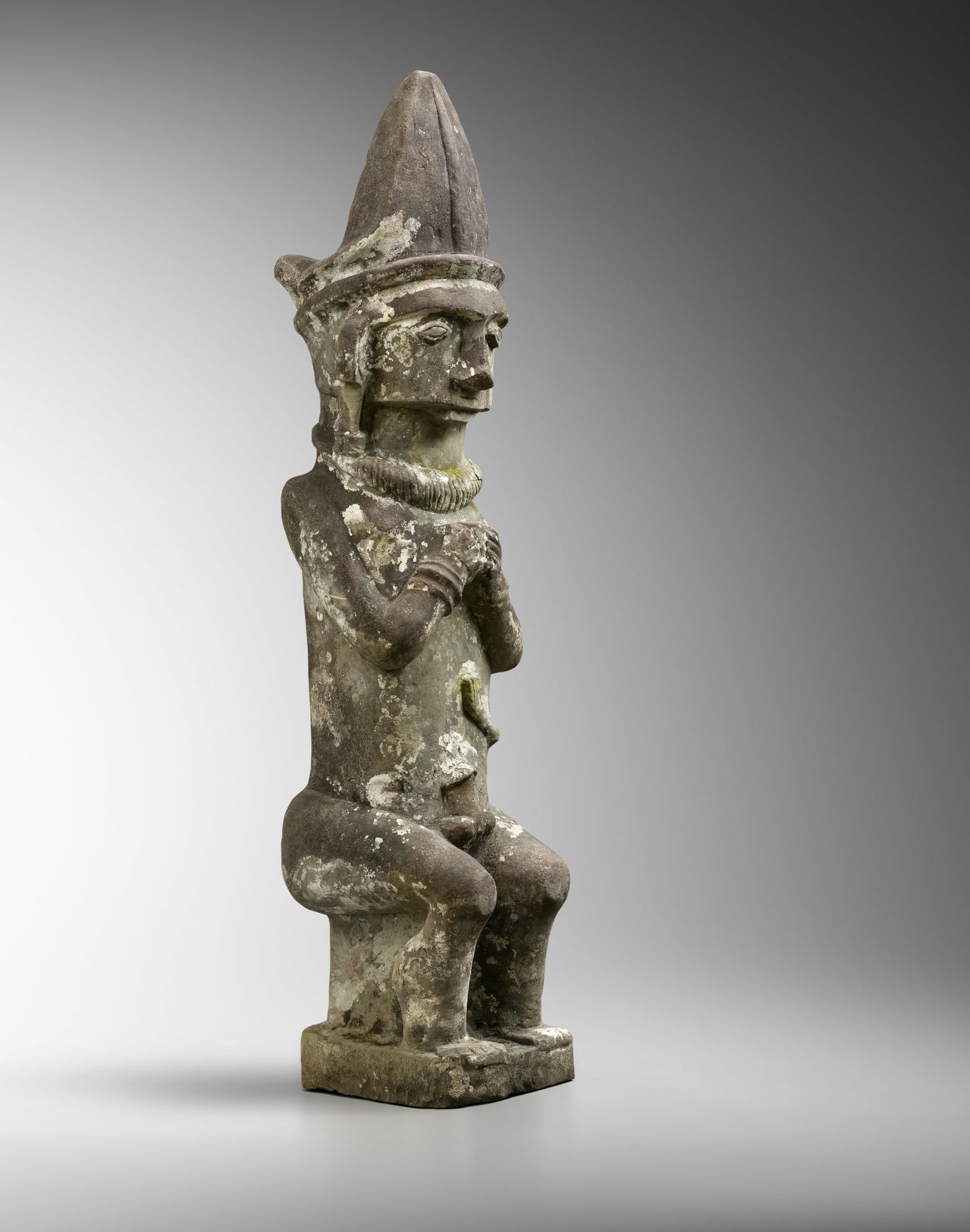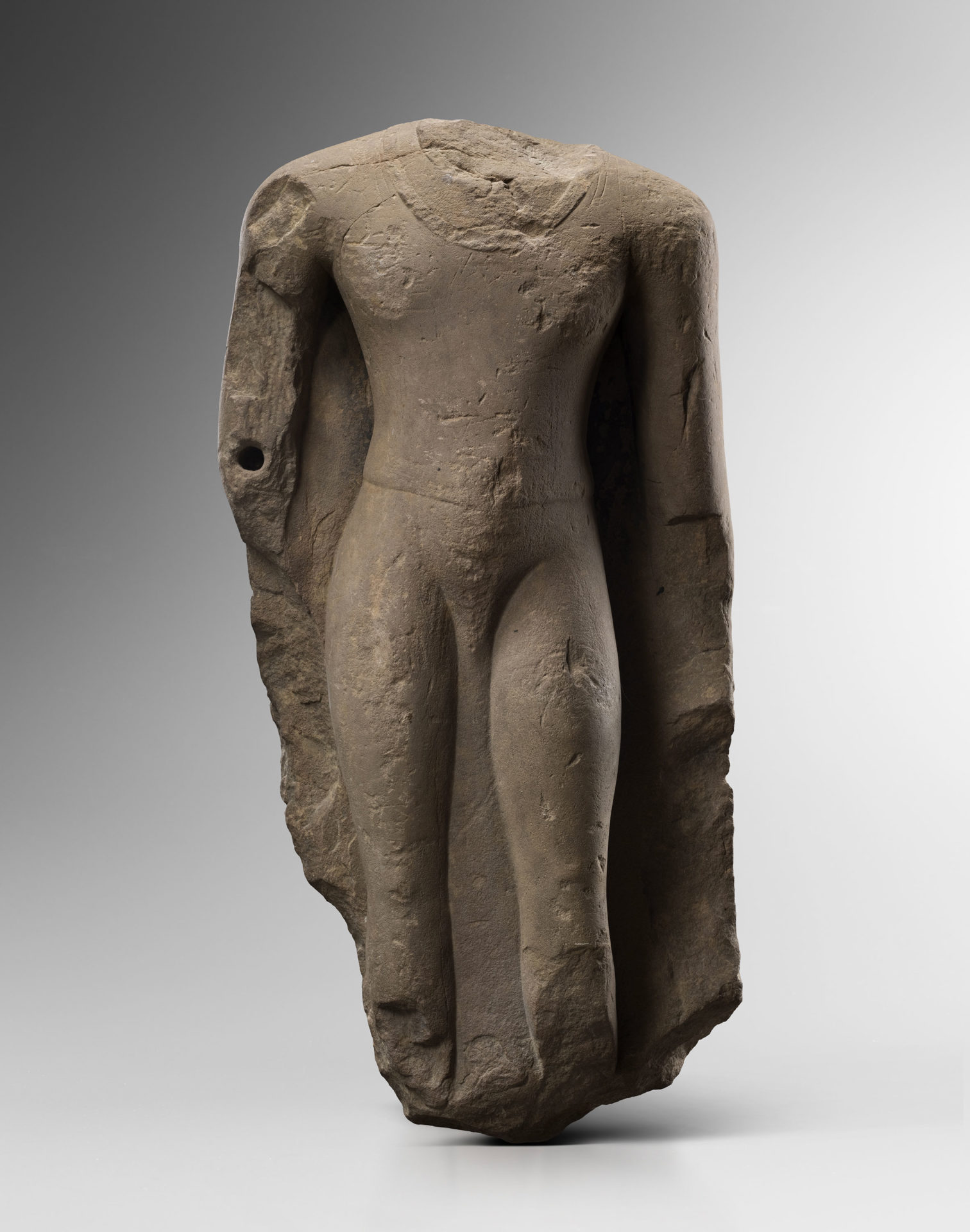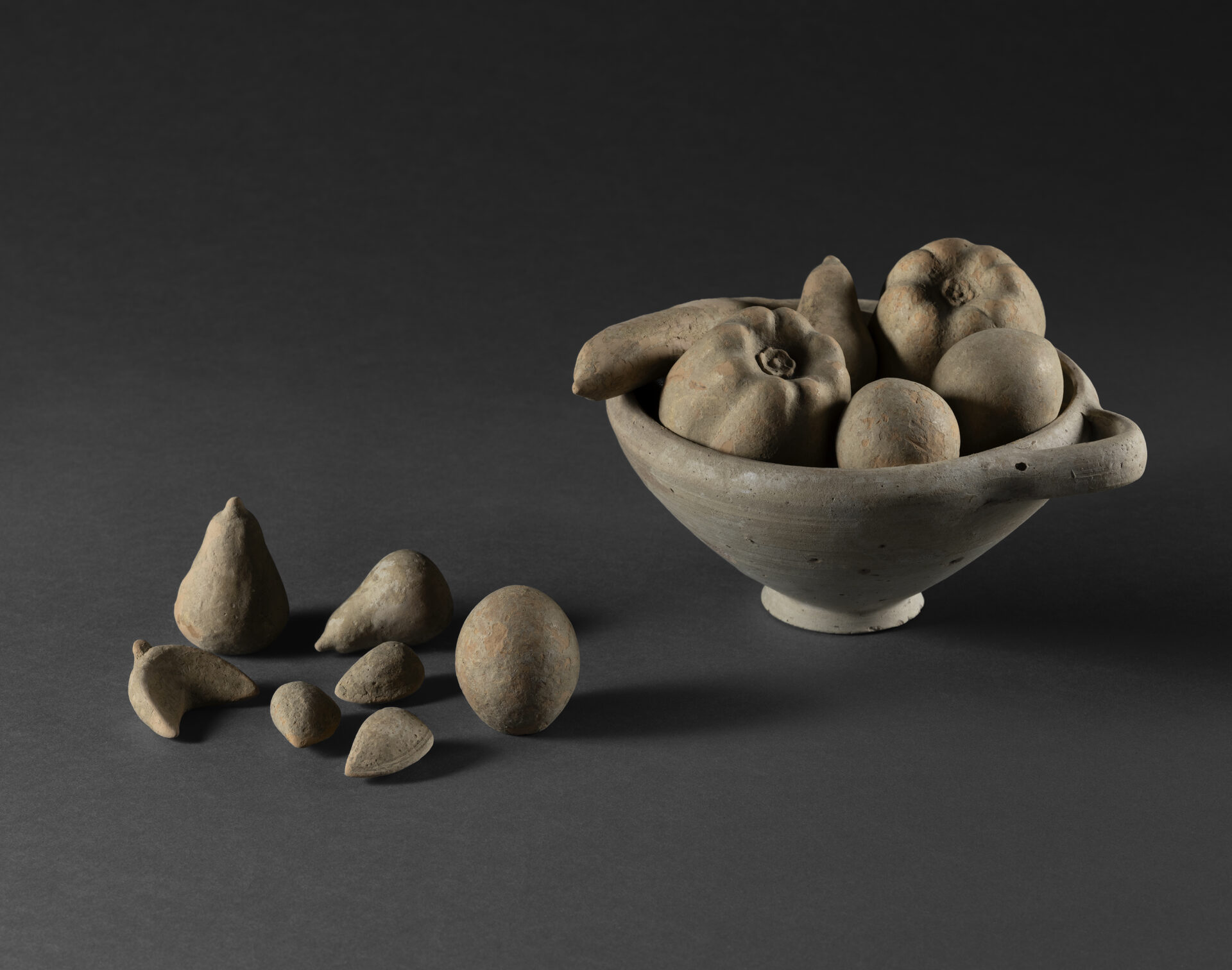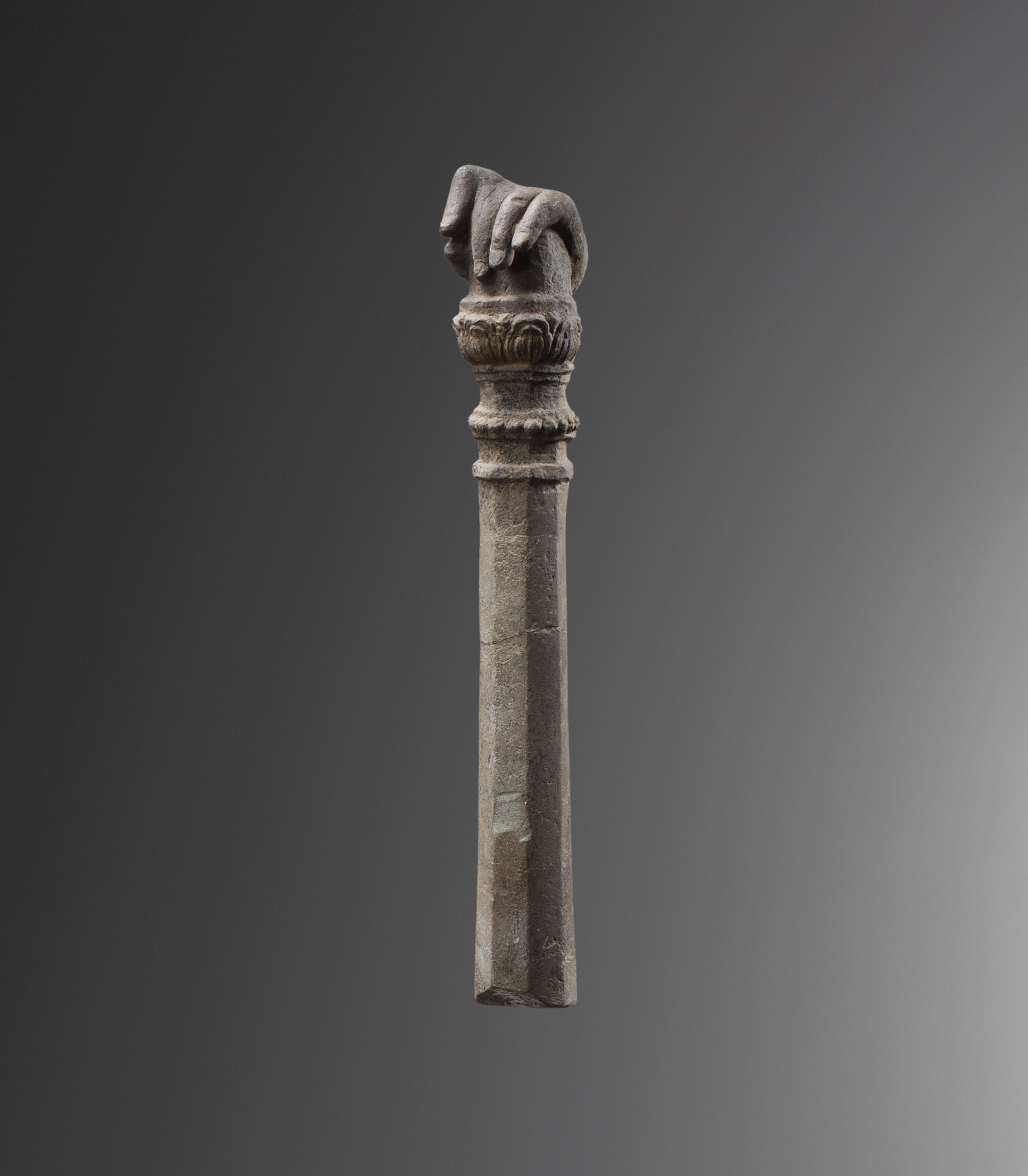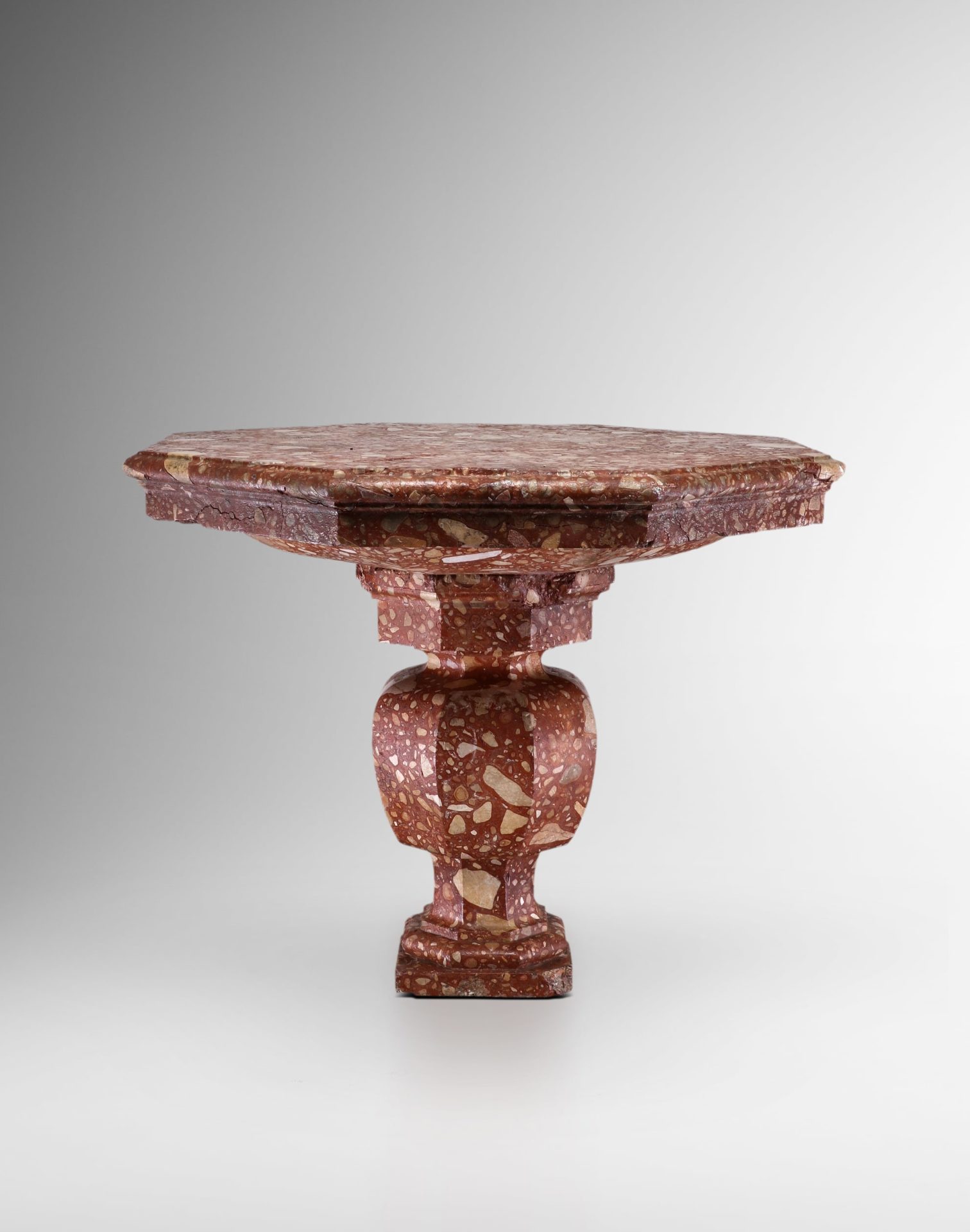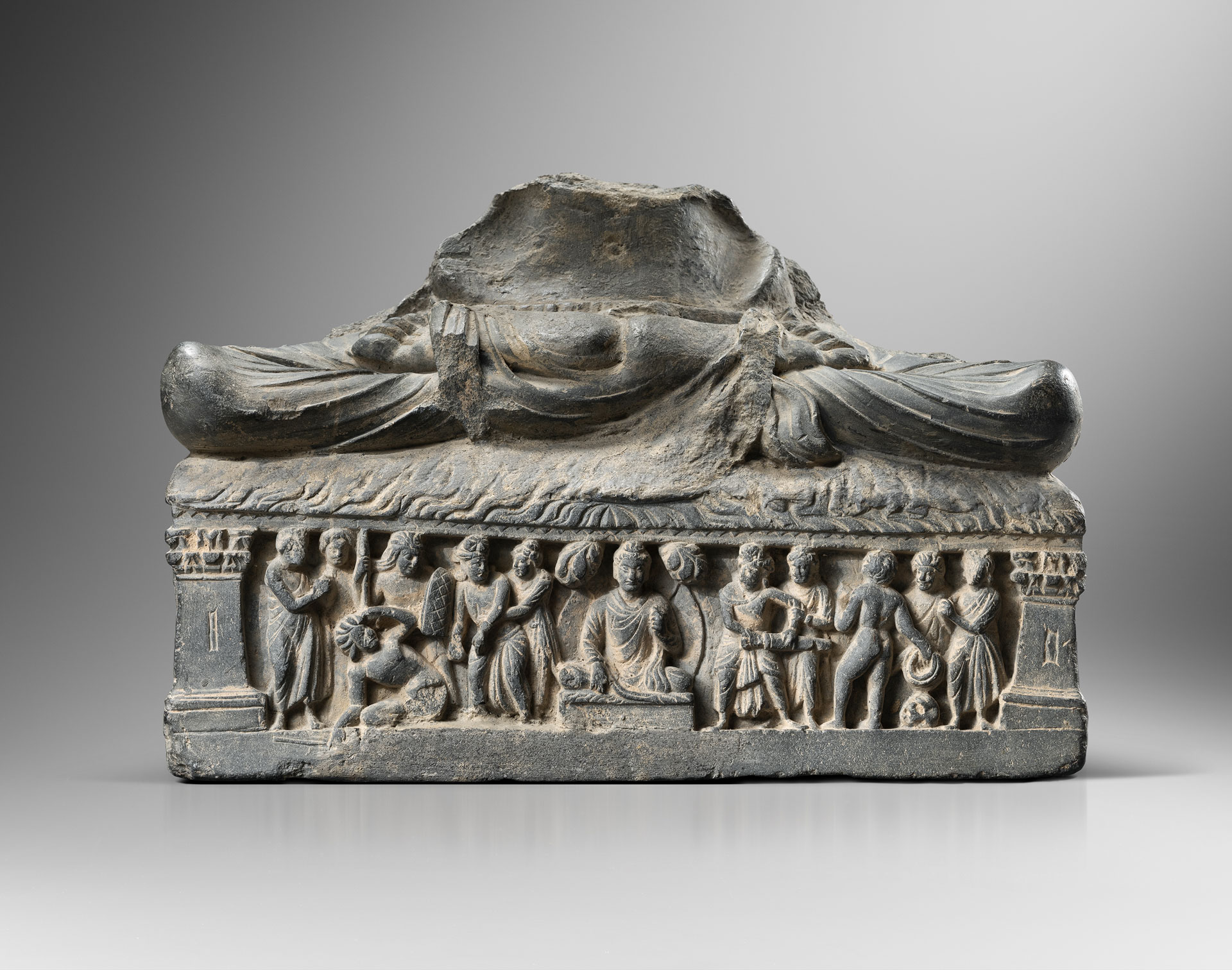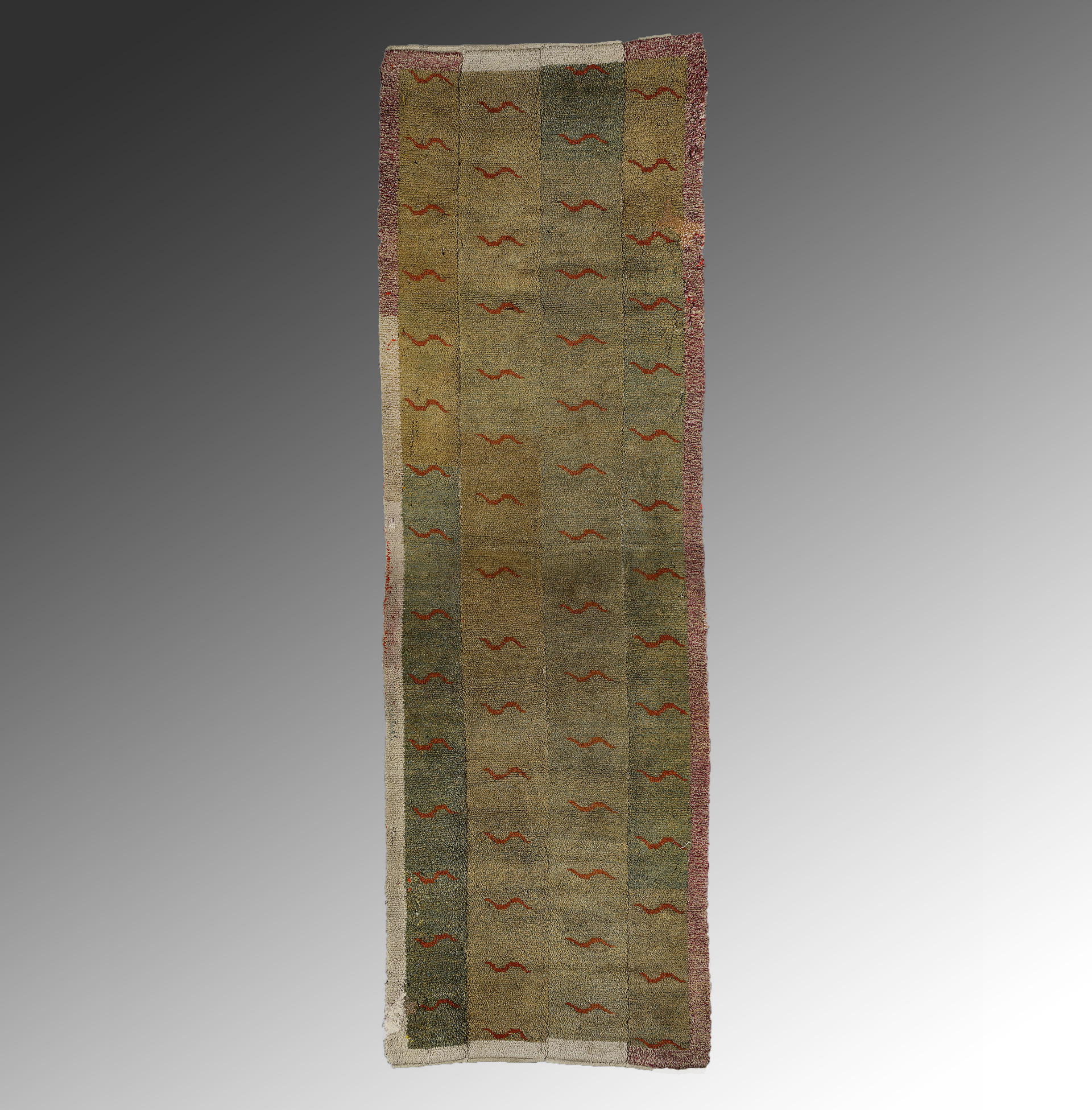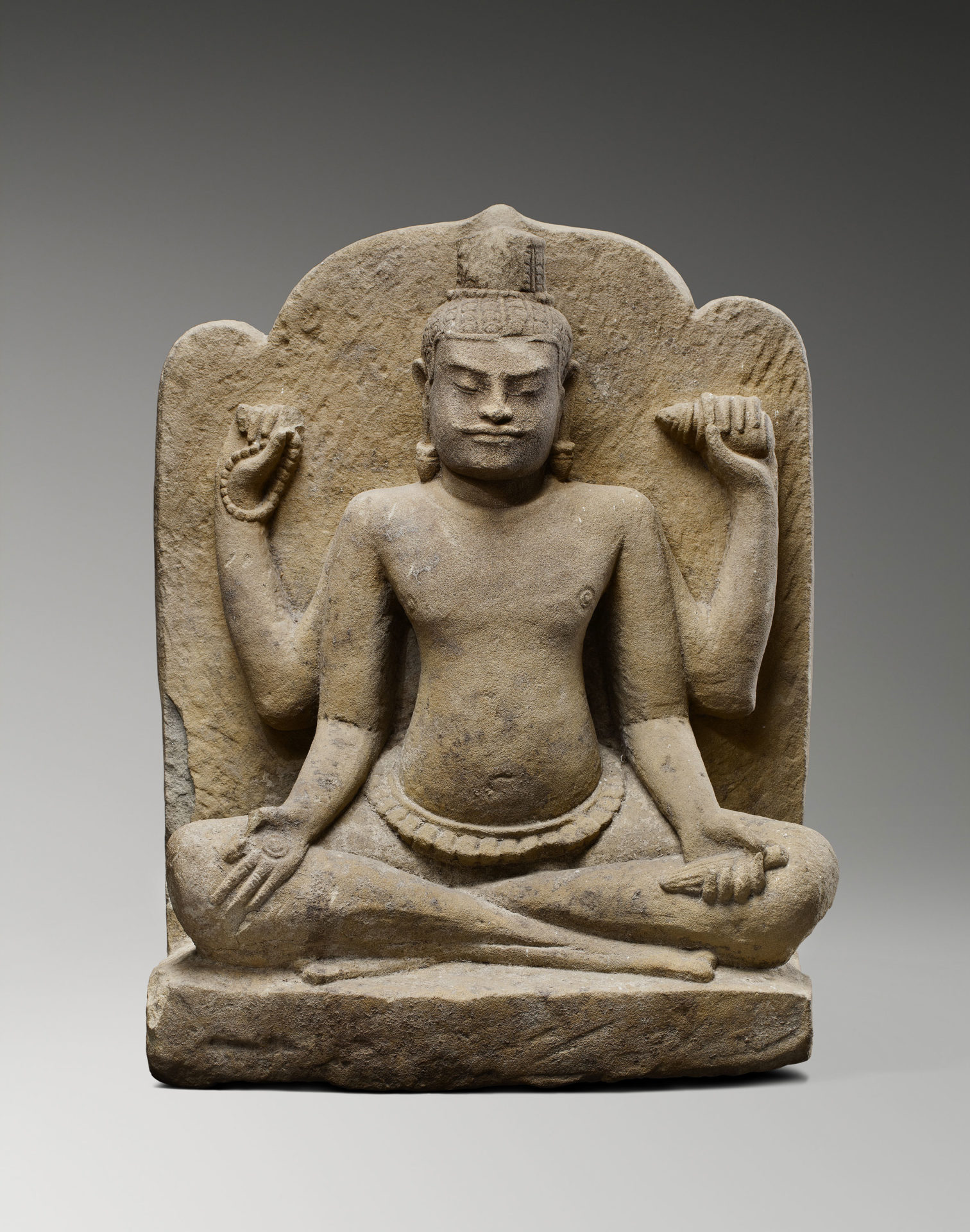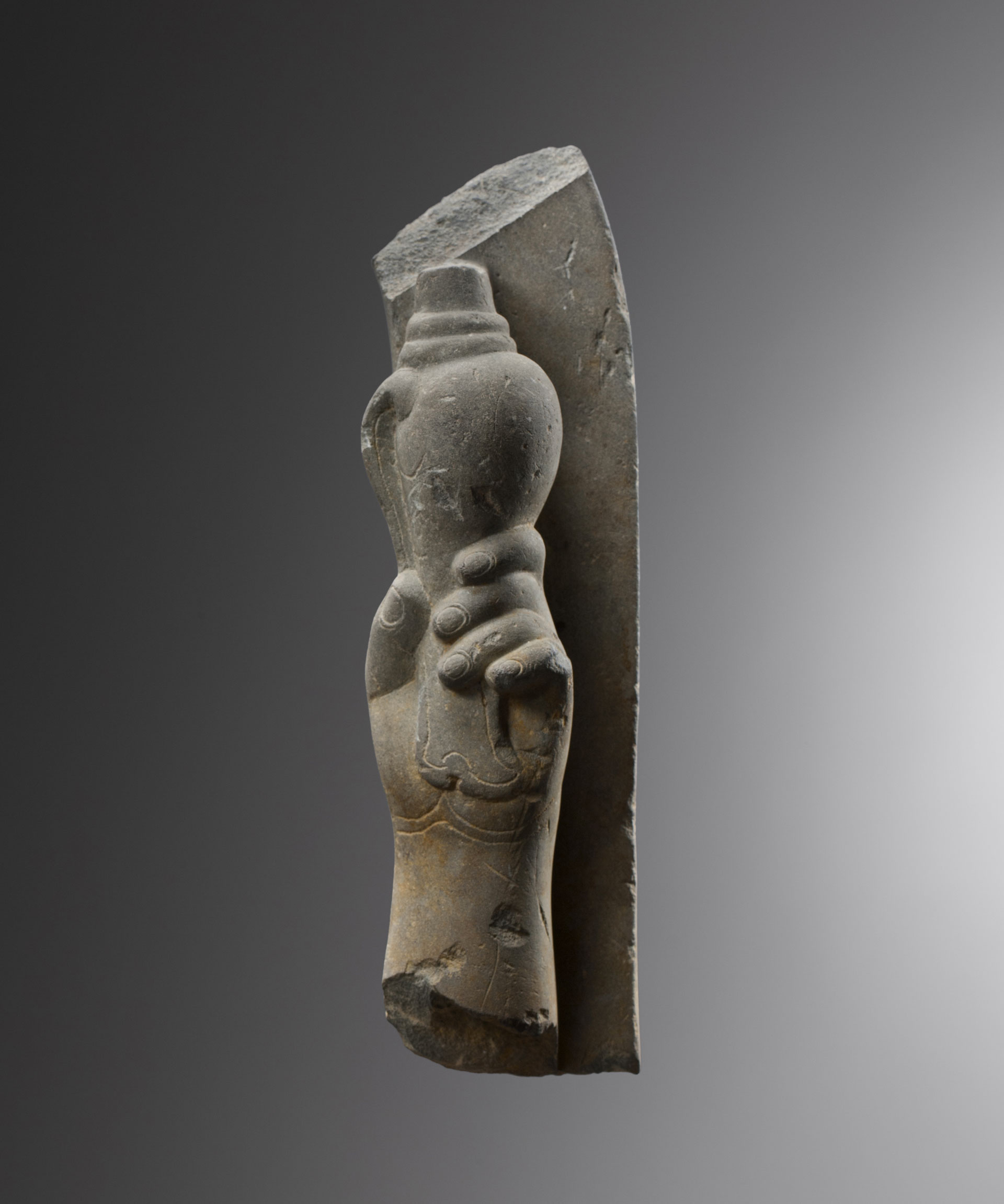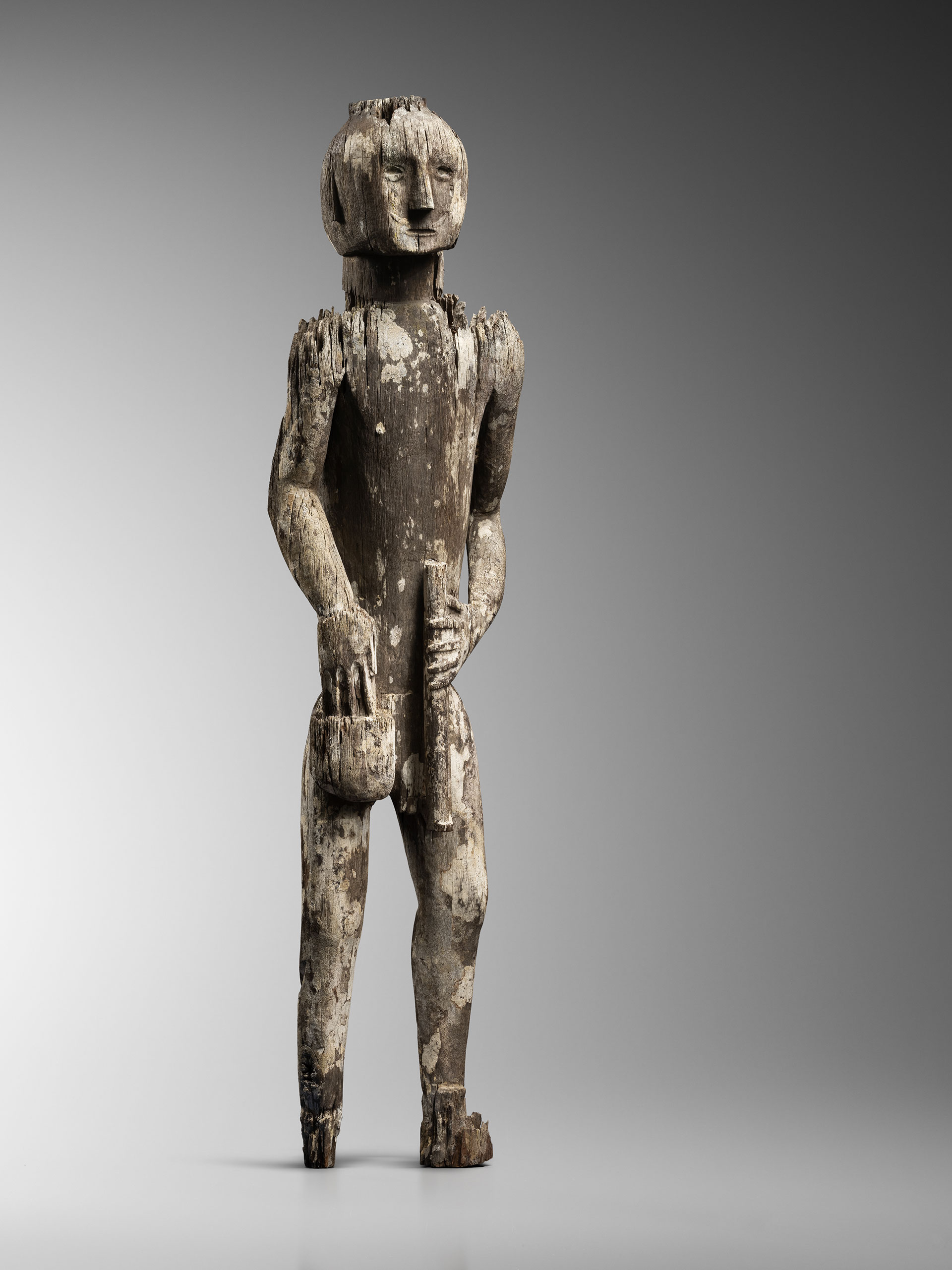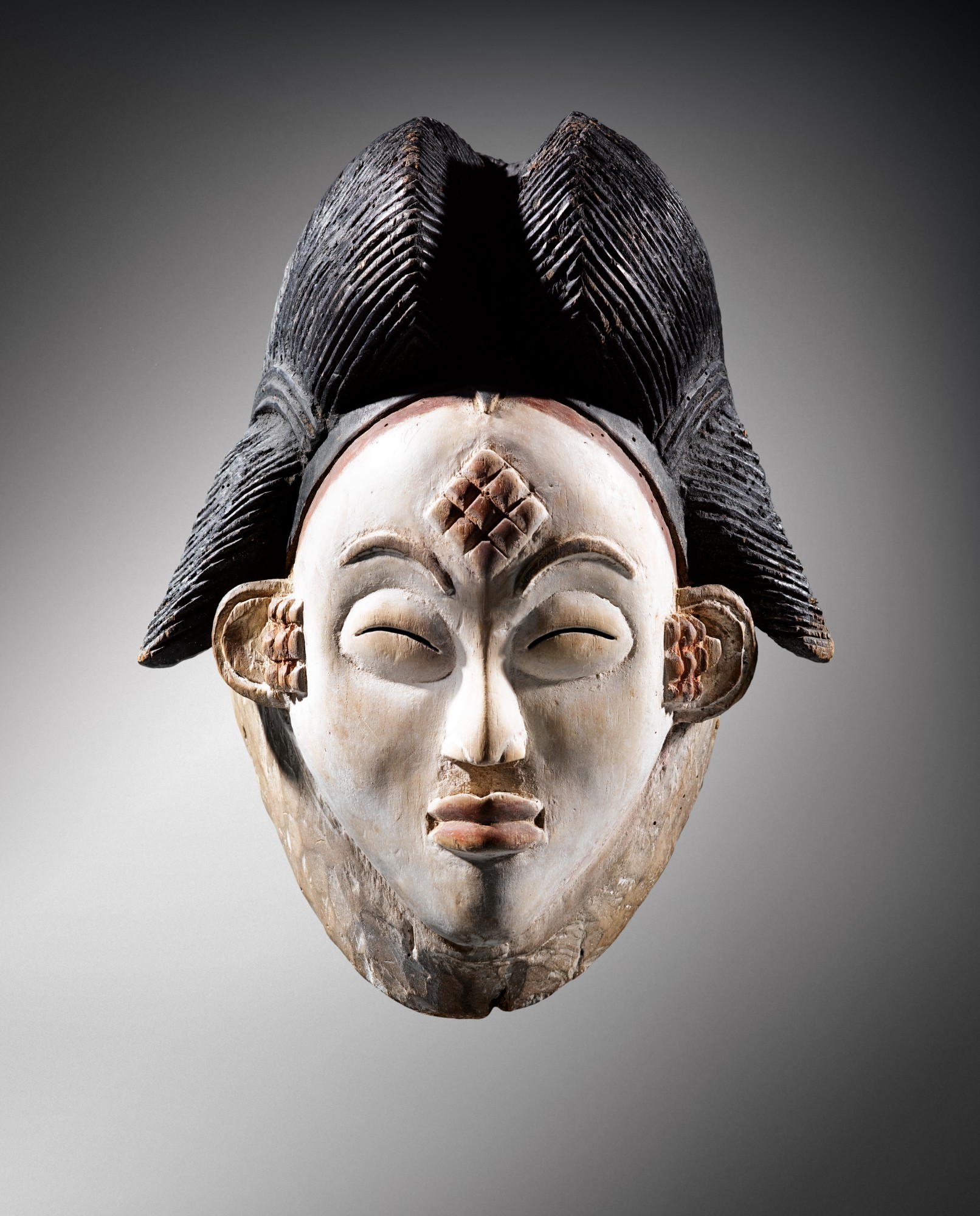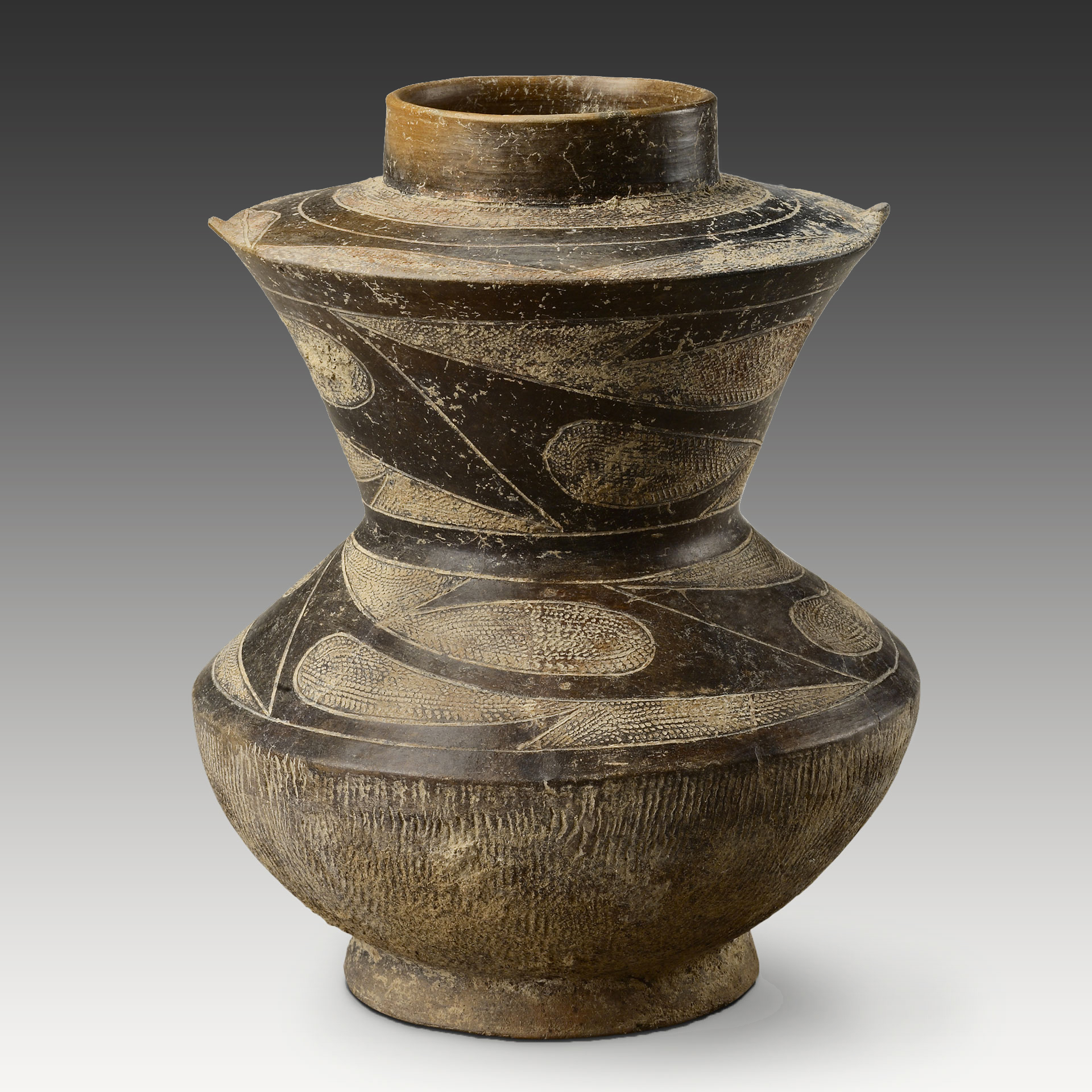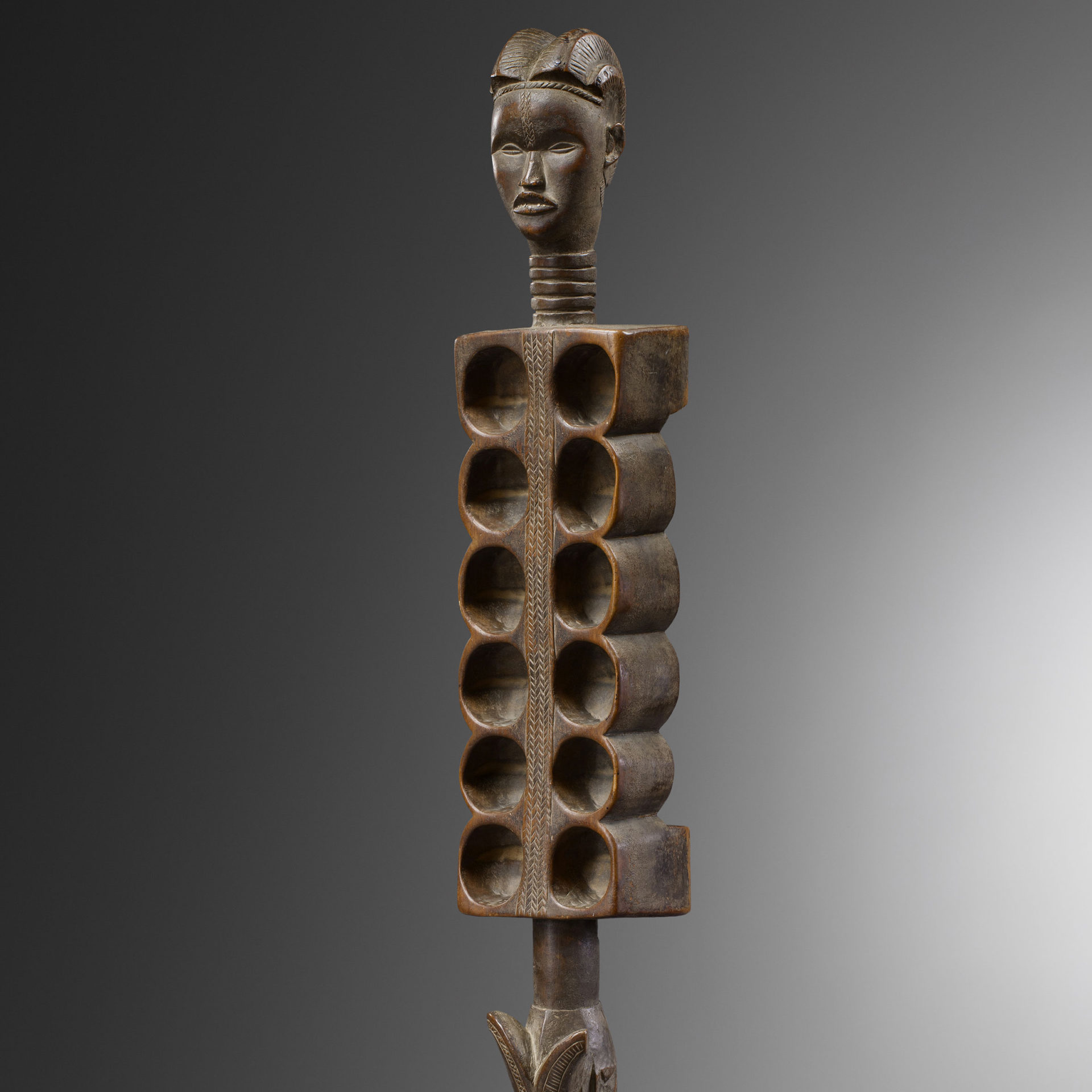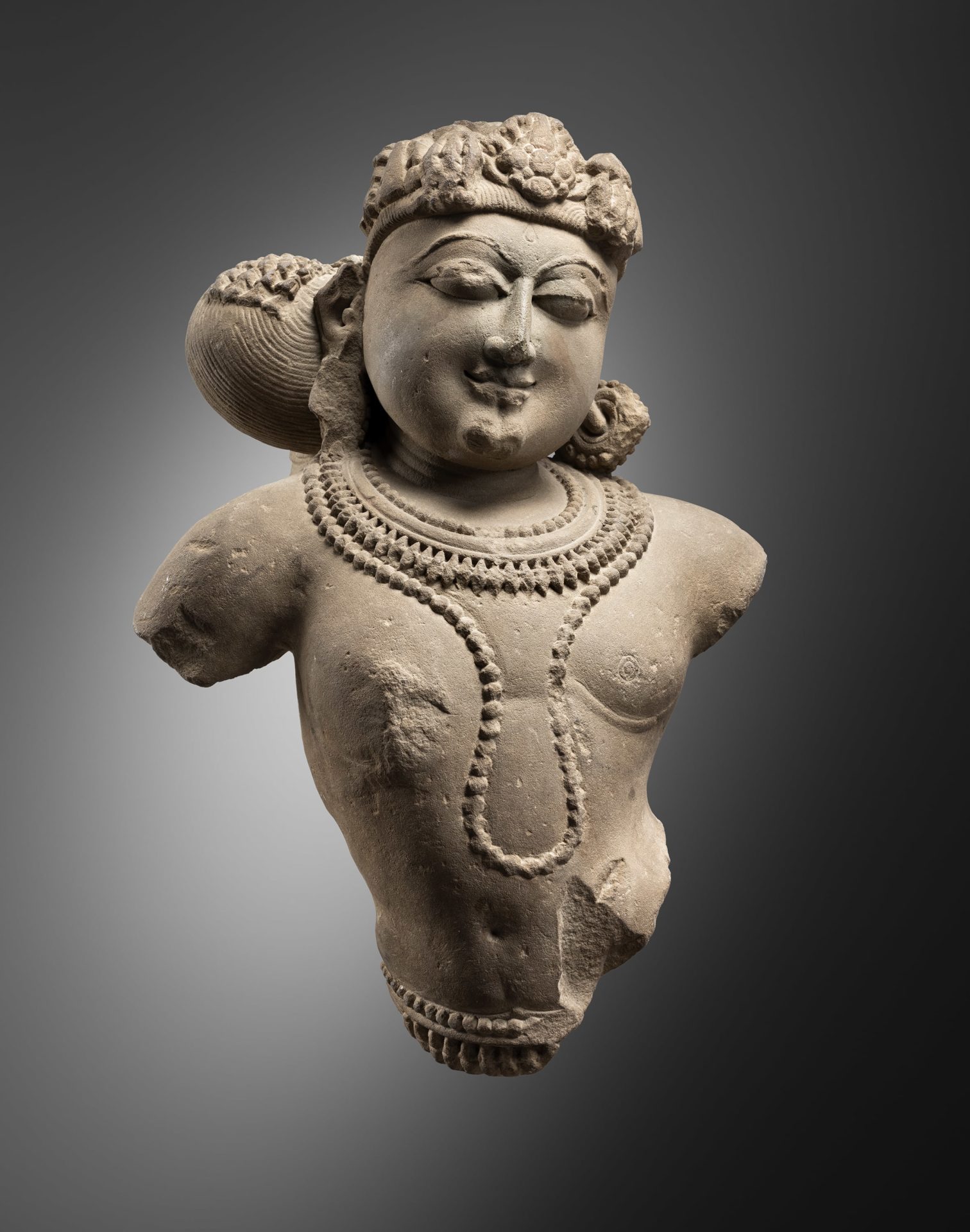The shoulders slope downward, are of equal height, and the upper arms form a single block with the torso, while the forearms are bent at a right angle, the left resting atop the right. The chest is delicately modeled, the abdomen slightly rounded over a barely suggested pubic area.
The legs are separated at the thighs by a deep notch that fades at the knees.
These figurines, improperly called “idols,” have been discovered both in necropolises and in dwellings. Generally made of marble, these idols—like Cycladic pottery—could also be made of various materials: steatite, schist, calcite, gray marble, ivory, etc. The 1972 archaeological excavation reports in Greece mention the discovery of fourteen idols, whose « variety and quality are remarkable. Notably: fourteen pieces of Cycladic idols (ten in marble, one in schist, one in flint, and two in ivory…).”¹
Several Cycladic idols made of schist are currently held in the collections of the National Archaeological Museum of Athens.
It is not possible for us to determine whether this idol comes from the Cycladic Islands or from Anatolia. However, according to the same source, “the purely Cycladic objects or those in Cycladic style prove the presence in Archanes of inhabitants originally from the Cyclades, likely merchants.”
This suggests a broad dissemination of Cycladic customs and culture in bordering regions, of which our statuette is a particularly fine example.
¹ Bulletin de correspondance hellénique, France, 1973, issue 97-3, p. 253
CYCLADIC IDOL
- Greece or Turkey / Anatolia
- Ca. 25th-22nd century B.C.
- Schist
- Height: 12,4 cm
- Provenance:
• Bonhams, Knightsbridge, 21 Oct 1999
• Private Belgian collection
- Publication:
• Karim & Isabelle Grusenmeyer, Damien Woliner, A World of Sculptures, Brussels, 2016
Photo credit : Studio Asselberghs – Frédéric Dehaen

